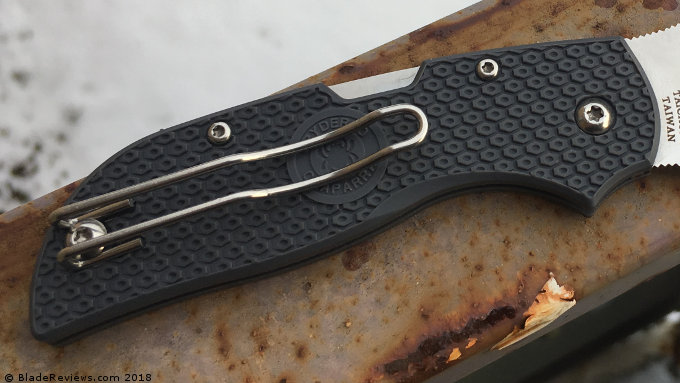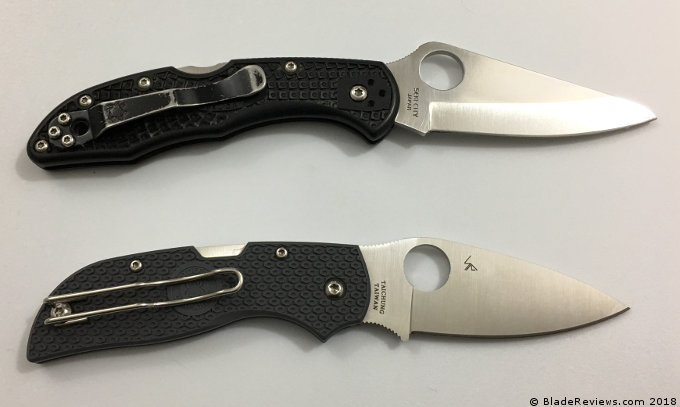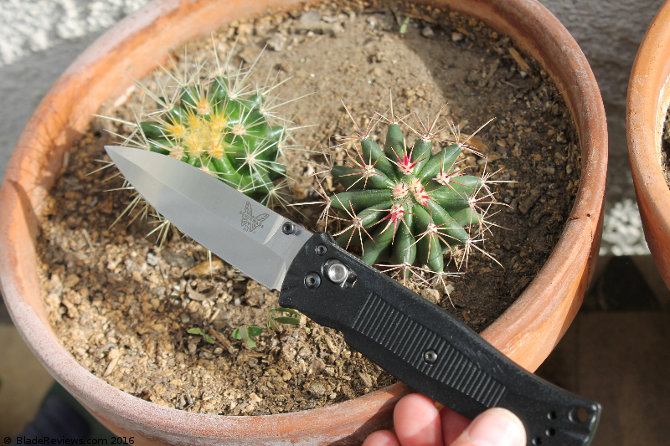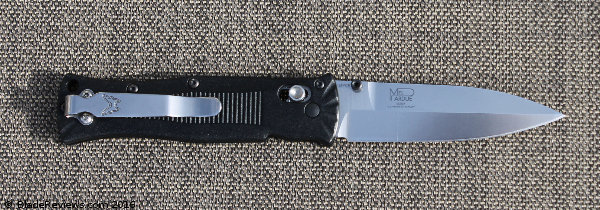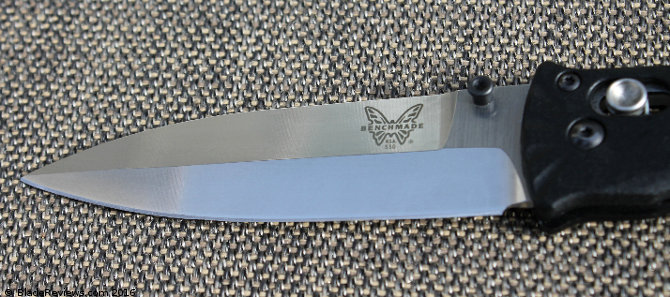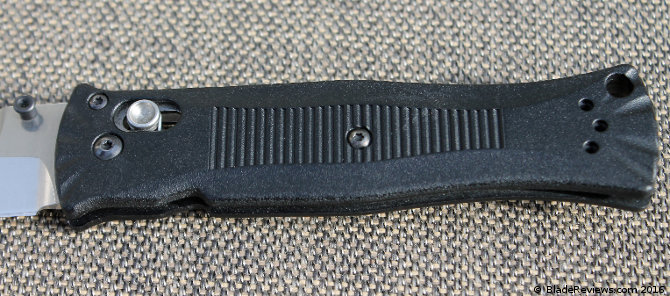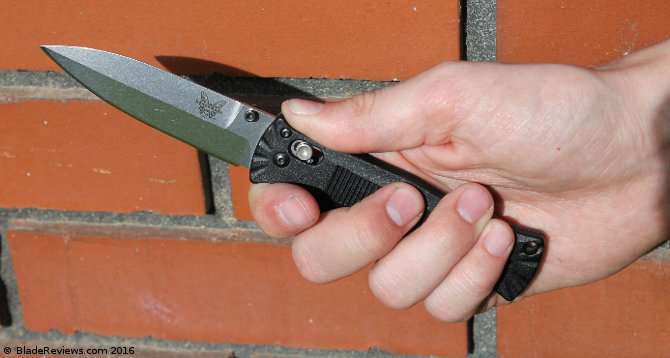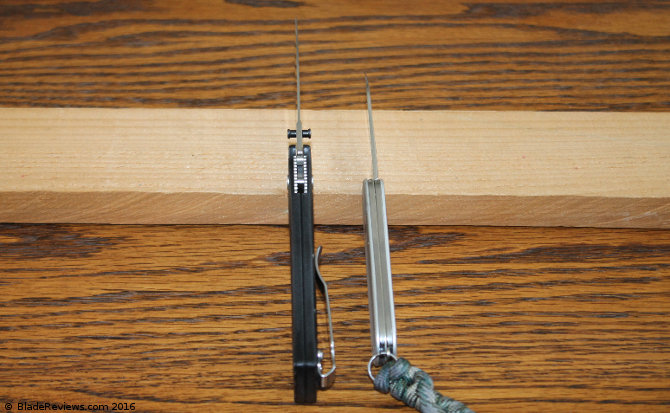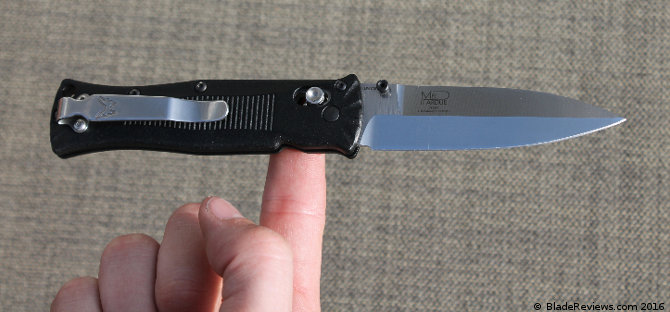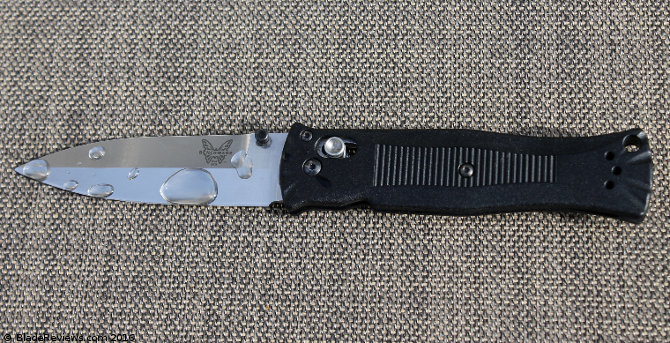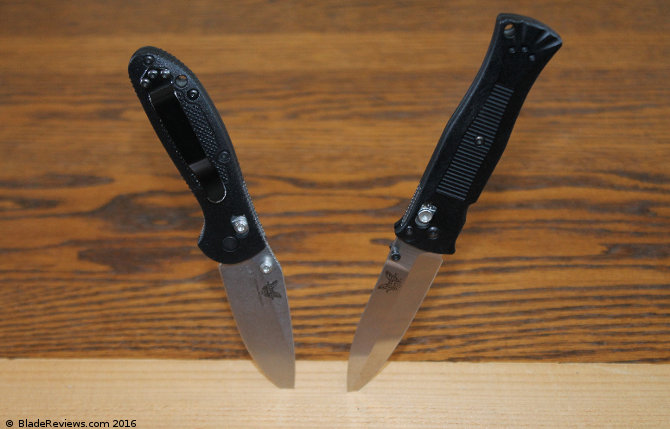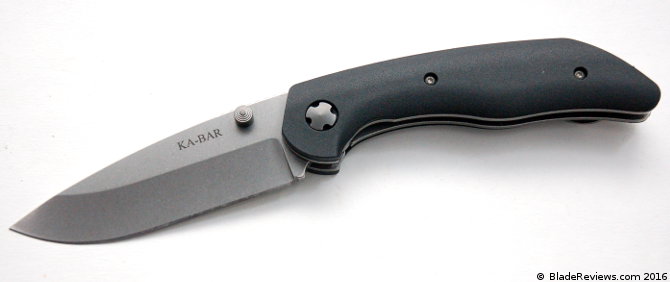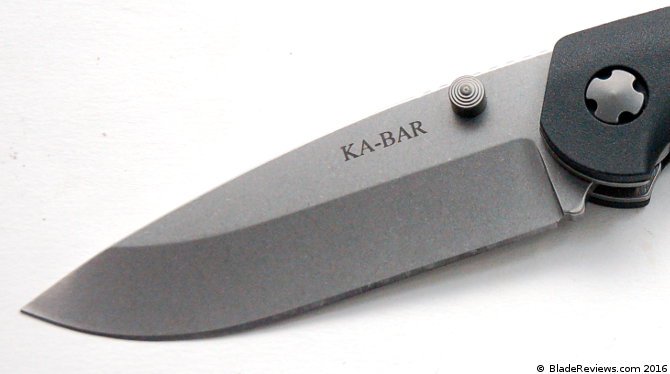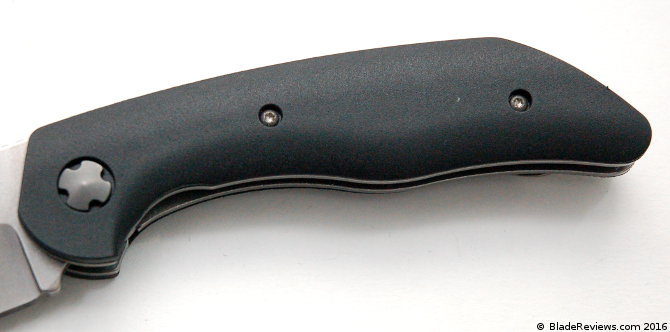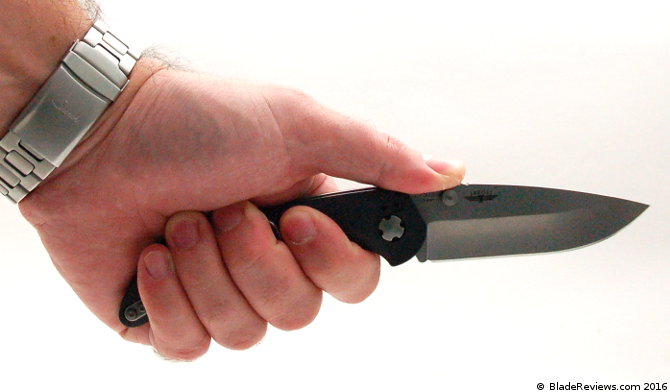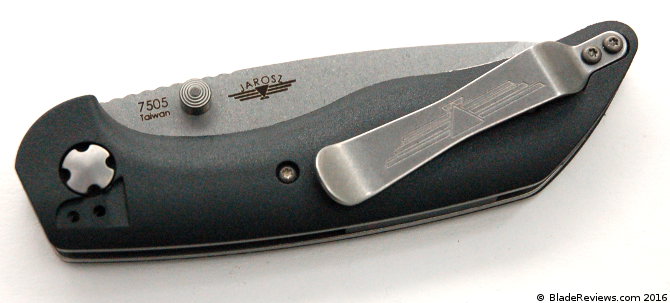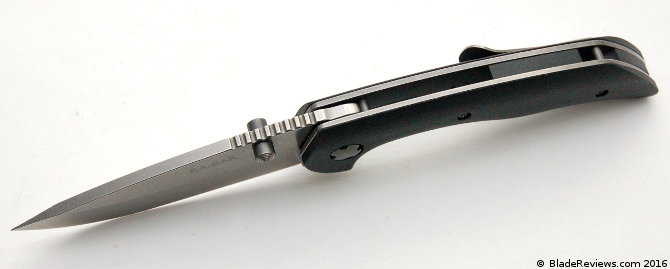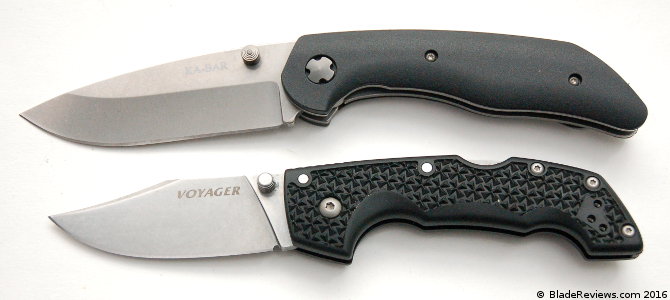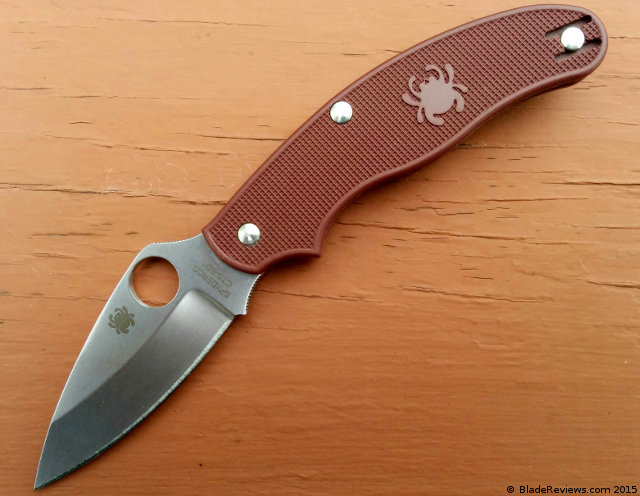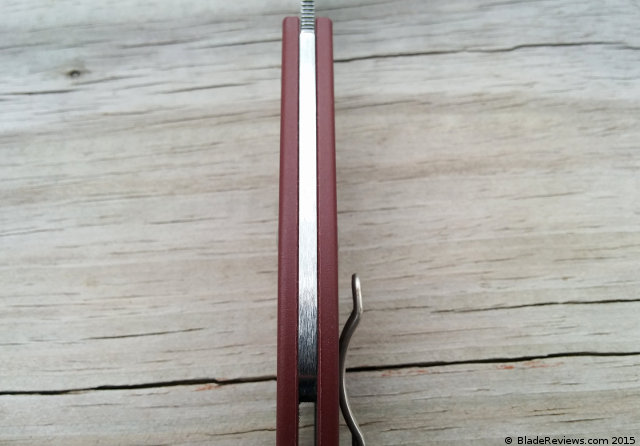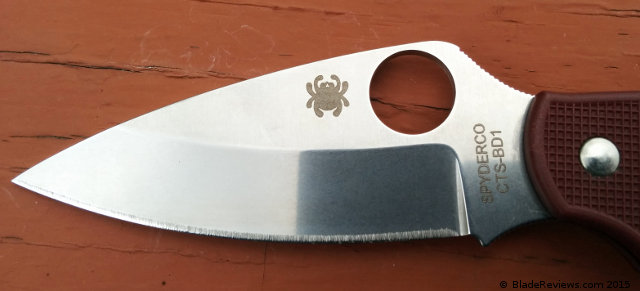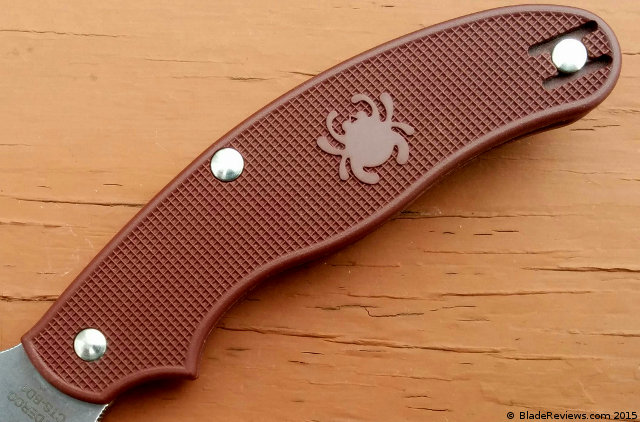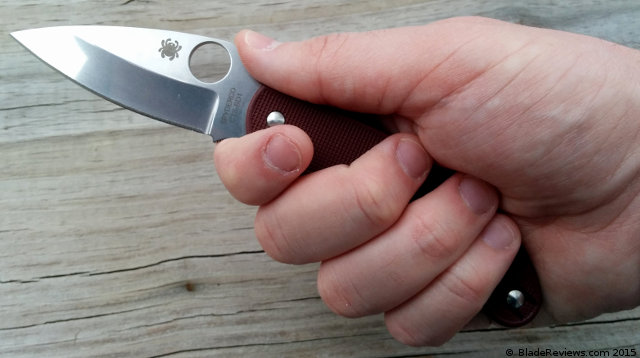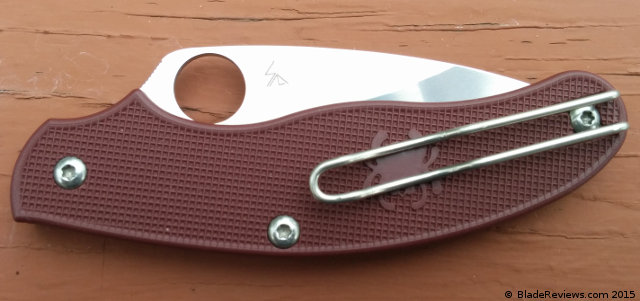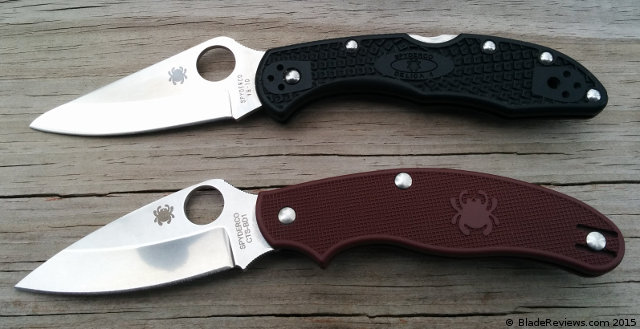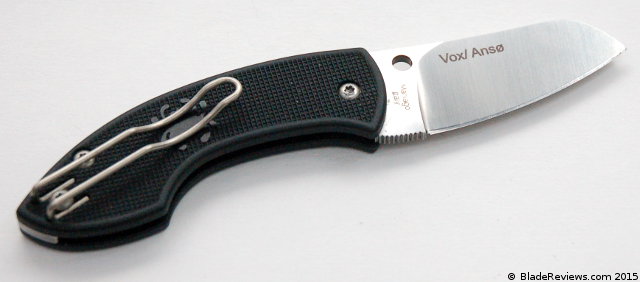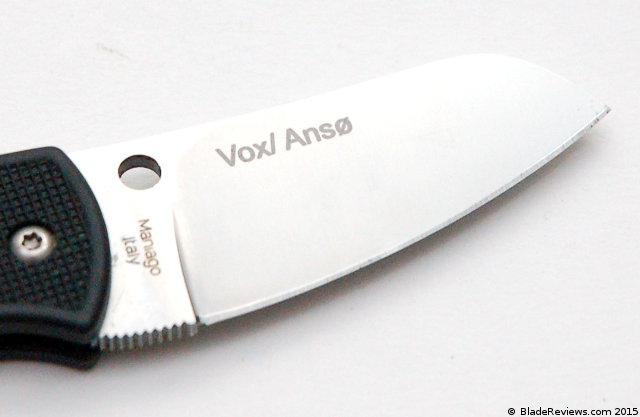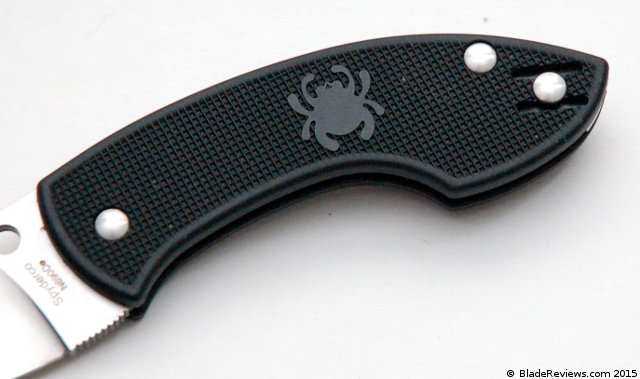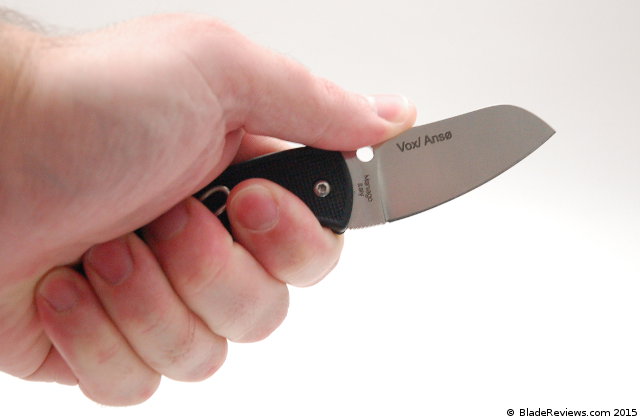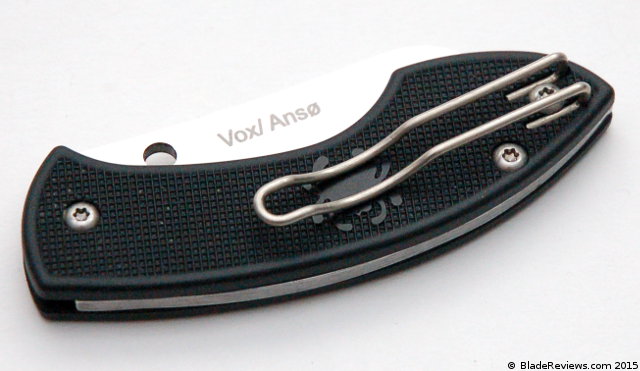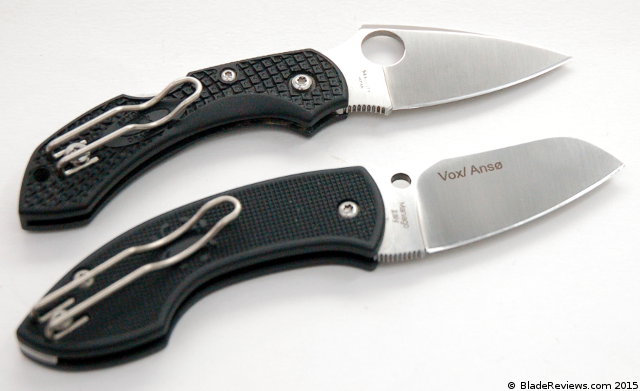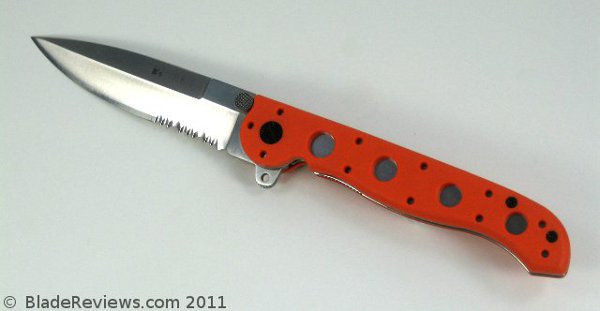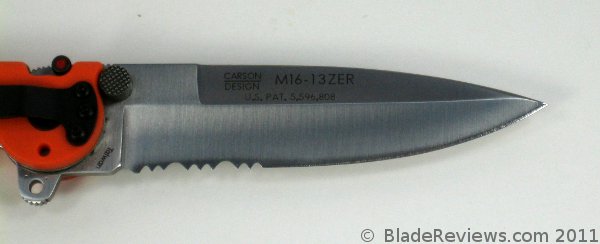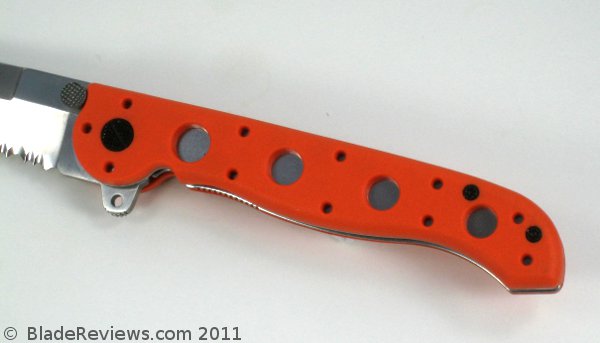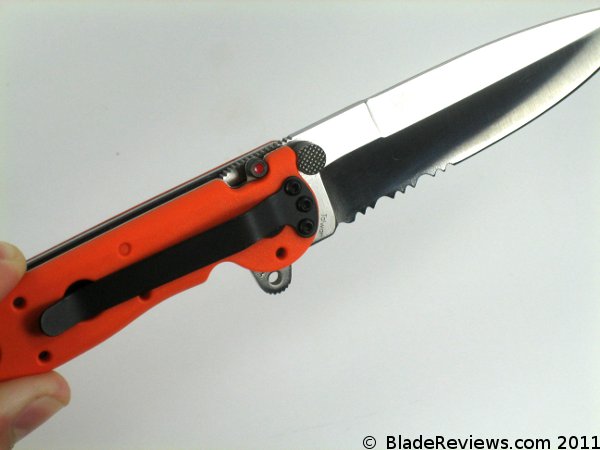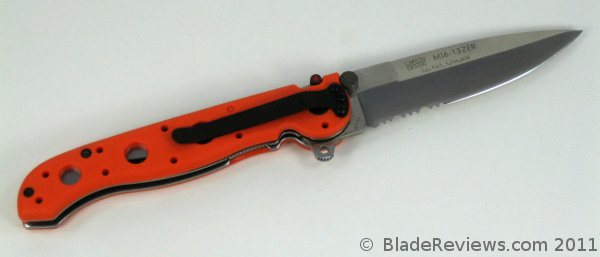The word ‘refinement’ is one of those bits of critical shorthand that gets people nodding their heads without, most of the time, meaning anything. But in the case of the Chaparral FRN, the latest, least expensive entry in a series that began in 2011, we know it’s been worked over, thought about, maybe even agonized over. Sal himself has alluded to the Chapparral FRN project’s particular specialness to him and the company’s drive to get it done and get it right.
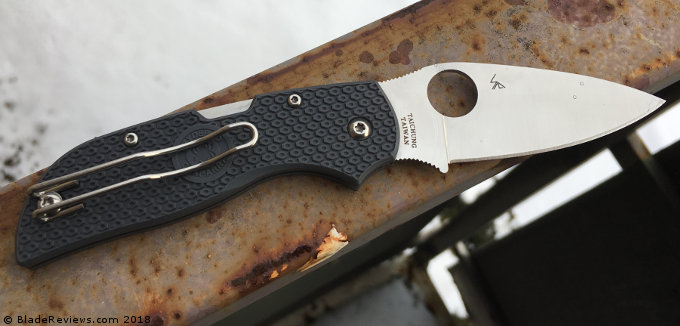
Buy the Spyderco Chaparral Lightweight at BladeHQ
And the Chaparral series itself is part of a longer lineage. There’s a kind of “Ur-Spyderco” design at which many of the company’s most successful releases originate. Utility-oriented blade, friendly size, ergonomic handle with a half-and-half finger choil…this is the starting point for many seminal Spyderco knives. The Caly, Sage, Cat, Native, Dragonfly, and Stretch series all originate here, and so does the Chaparral – and it may, possibly, be the best of all those knives in terms of pure EDC.
Yeah, I don’t like to bury the lead like this, but it’s no use withholding the obvious truth here: the Chaparral FRN is a great knife. It’s probably perfect, and I knew that before I even got one. This is the rare case where there was little difference between imagining what a knife was like before I owned it and discovering what it was actually like after carrying and using it. There’s not a thing I would change about this knife and I think it would please anyone in the market for a knife of this size and use category.
But then again, knives aren’t like books or games, where each one offers a different experience you can’t find elsewhere. All knives fundamentally do the same thing. Is the Chaparral FRN’s Platonic perfection worth your attention and your dollars? Let’s take a look.
General Dimensions and Blade Details
The Chaparral has a blade length of 2.8”, with a cutting edge of 2.2”. Handle length is 3.5” without the finger choil, and with it is right at 4”. Overall length is 6.3” and weight is 2.0 oz. The Chaparral is made in Taichung, Taiwan.
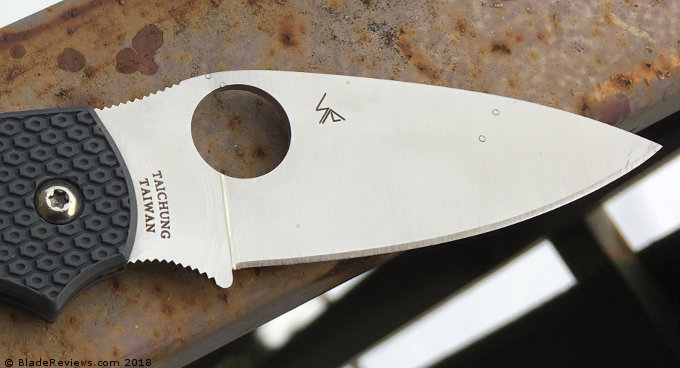
In terms of size, the Chaparral falls between the Dragonfly 2 and the Delica 4. It has about .4” more cutting edge than a DF2 – enough to boost it into wider cutting capabilities – and compared to the Delica it’s more compact, albeit with .3” less cutting edge (not as crucial a size increase).
This will be a recurring motif with the Chaparral FRN, but the leaf shape blade does most things well and nothing poorly. And when it comes to detail work and surgeon-like snipping in particular, the blade really sings due to a thin, precise grind. Edge geometry and blade thickness rarely make or break a knife for me, but the Chaparral FRN’s configuration was noticeably optimized.
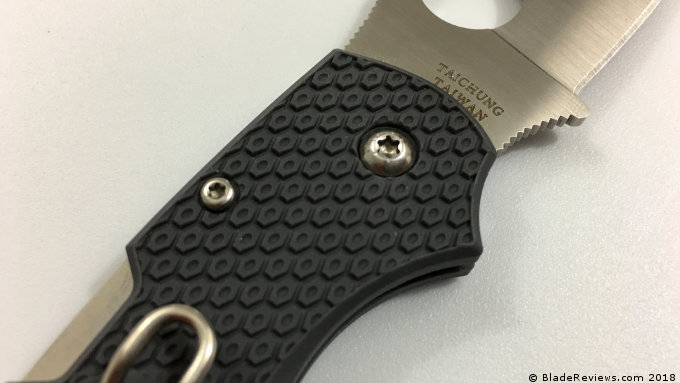
The Chaparral FRN marks my first long-term encounter with CTS-XHP. I’ve been so long acclimated to the solid performance of modern steels that it had virtually no chance to wow me, but that doesn’t mean it was bad. Edge retention and sharpening seemed about on par with S35VN, and maybe due to the generous edge bevel and thin blade it responded eagerly to stropping.
Now of course, seeing this kind of steel on an $80 knife plays into the value proposition with the FRN Chaparral, but I’ll discuss that further down.
Handle, Ergonomics, and Pocket Clip
The gentle central handle swell, the narrow butt-end, the forward half-and-half choil – any knife enthusiast knows these elements like the words to his or her favorite song. And as with a favorite song, familiarity has failed to breed contempt. I’m not tired of this handle design at all. Each time I returned to the Chaparral FRN after a day with something else, I was pleasantly surprised. It just feels right.
This is a very thin-handled knife, and thin handles don’t always make for good ergonomics. Narrow knives can twist and turn in hand or dig into your palm during hard cutting tasks. Thankfully the Chaparral FRN avoids these problems, with chamfered edges all along the perimeter, adding dimensionality and softening the places pressed against your palm and fingers. A subtle and smart detail that makes a world of difference.
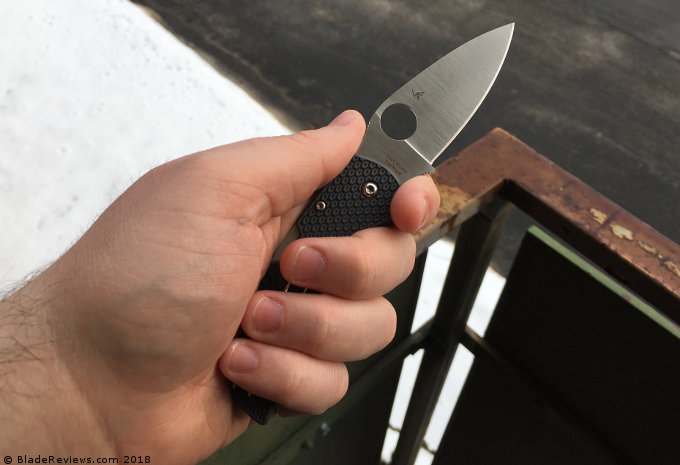
Yes, the bi-directional texturing pattern here is new, but not really different. Spyderco opted for a hexagonal motif, but otherwise the new texturing provides the same sure grip (and fires off the same trypophobia if you look at it too long) as previous FRN-handled Spyderco knives.
The deep carry wire clip is here, and yes, I admit, it is good. I’ve overcome my distaste for this clip. It hides the Chaparral completely in the pocket, which is a nice, people-friendly flourish for a knife as urbane as this. Still, I think the method of securing the clip, a screw that goes over two little prongs laid into cutouts in the handle, is weak, susceptible to knocks and scrapes in a way the standard clip screws aren’t – but not everyone is as klutzy as I am and a little care will go a long way here.
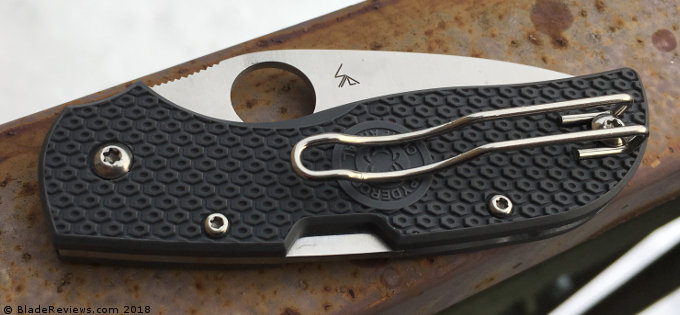
Deployment and Lockup
The opening hole is, as always, great. Accessible, ambidextrous, able to be opened one- or two-handed. It’s a winner.
But take a moment to pity the poor lock back. Wrongly neglected, it does so much right and very little wrong. It’s strong, self-adjusting, innately ambidextrous, and keeps your fingers out of the blade channel when you close the knife. Why does it have this reputation as a stodgy, cumbersome contrivance of yore, in the days before the twin lights of Michael Walker and Chris Reeve brought us out of the dark ages?
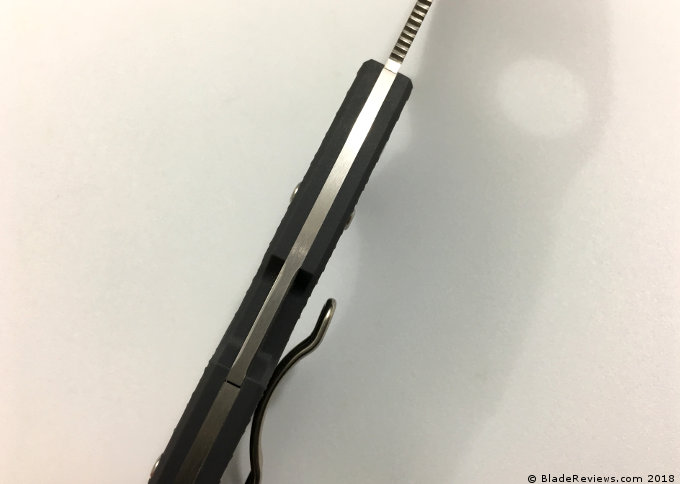
Well if you’re looking for a good argument in 2018 for the lock back, the Chaparral FRN is it. Glassy smooth, it snaps into place with authority and holds the blade dead still, with nary a millimeter of play in any direction. The overall narrowness of the knife makes repeated disengagements slightly uncomfortable, but that’s only if you’re sitting there opening and closing it for extended amounts of time.
Spyderco Chaparral FRN Review – Final Thoughts
The Chaparral FRN is a great knife. But yeah , there are tons of great knives out there right now. What, if anything, makes the Chaparral stand out?
It comes down to price. Delivering real value in the crucial sub-$100 bracket takes doing. Real value comes from innovations, not sacrifices. A knife with bad steel and cheap materials is not a good value, it’s simply cheap (whether or not it’s a good knife). The Wharncliffe Delica 4, the Polestar and Alcyone, even the Byrd line upgrades all reflect attempts at real value, and so does the Chaparral FRN.
It may be more expensive than those others, but it goes further than they do, too, bringing excellent steel, perfect size, and as much pure Spyderco design excellence as you could wish for, all while hitting a price point within spitting range of the Delica – and that’s a pretty big deal. It won’t ever dislodge the Delica/Endura lines in terms of popularity, and there’re many knives from many manufacturers to consider, but there’s a distinct chance that for anybody in the market for a pure EDC knife, the Chaparral FRN is now the sub-$100 entry to beat.
The particular Chaparral FRN under review is a special one, a Christmas gift from my girlfriend Leslie that came engraved on the show side (hence why you only get pictures of the back throughout this review). It’s part of my permanent collection on that ground alone. But in addition to sentimental value it also happens to be a perfect knife that I unreservedly recommend. I think it’s the best version of the Chaparral to get, unless you crave the pizzazz some of the pricier versions offer.
Yeah, but is it better than the Delica? Only time – and a possible Showdown – will tell.
- An Improved Classic: One of the newest additions to this best-selling family is the Chaparral Lightweight, which offers the same design theme and functionality as its brothers, but with a simple, reliable, and affordable injection-molded handle.
- Iconic Design: Spyderco's unique Chaparral series of gentlemen's folding knives expresses the same basic design platform with a variety of unique handle materials and treatments.
- Superior Blade Steel: Like the other versions of the Chaparral, its defining features include a full-flat-ground CTS XHP Stainless Steel blade.
- Ergonomic: The tough FRN construction minimizes weight and offers the high-traction advantages of our Bi-Directional Texturing pattern.
- Superior Steel: Nested in the handle are skeletonized Stainless Steel liners ensure excellent structural strength and precise alignment of all key components.
Editor: I recommend purchasing the Spyderco Chaparral FRN Lightweight at Amazon or BladeHQ. Please consider that buying anything through any of the links on this website helps support BladeReviews.com, and keeps the site going. As always, any and all support is greatly appreciated. Thank you very much.
